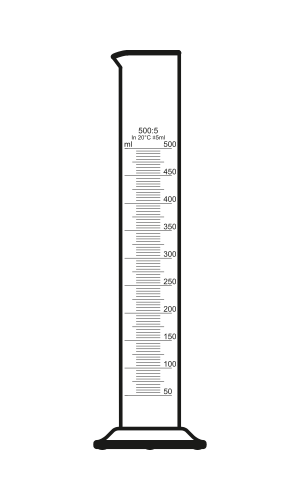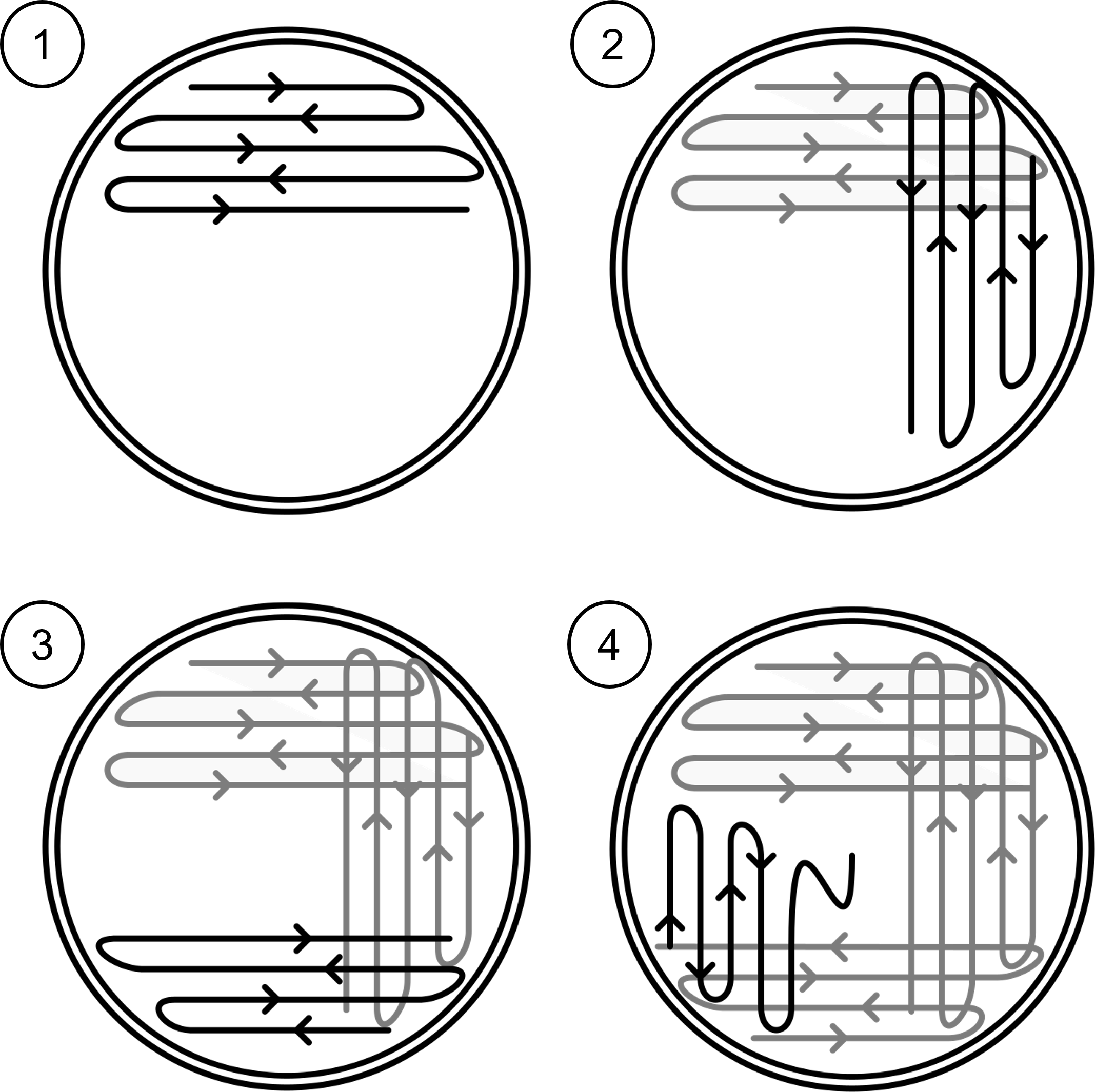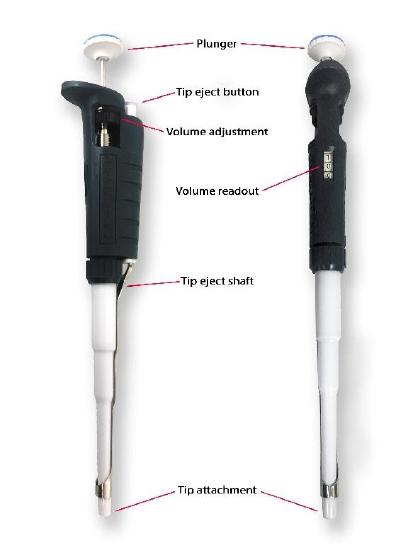OCR Specification focus:
‘Choose appropriate apparatus, equipment and techniques to achieve the proposed experiment’s objectives effectively.’
Selecting suitable apparatus and techniques is essential for generating valid, precise and reliable biological data. Effective choices ensure that measurements are appropriate to the aim, the scale of data, and the type of variable being investigated.
Choosing apparatus for the independent, dependent and control variables
The selection of scientific apparatus must align with the experimental goal and the type of measurement required. The independent variable is the factor deliberately changed, while the dependent variable is the factor measured to assess the effect of the change. Control variables are conditions kept constant to ensure a fair test.
Precision, resolution and range
Apparatus must provide a suitable resolution (the smallest change it can detect) and a suitable range (the span of values it can measure). Instruments with high resolution allow more precise data, increasing confidence in trends. For example, a thermometer with 0.1 °C divisions provides more precise temperature measurements than one with 1 °C divisions, which can improve the reliability of the dependent variable data.
Selecting the correct measurement instrument
Researchers should select instruments that match the required type of measurement. Common apparatus choices in A-Level Biology include:
Mass: electronic balance (various decimal place resolutions available)
Volume: measuring cylinder, graduated pipette, volumetric pipette or burette

A labelled measuring cylinder illustrating graduations used for approximate volume measurements. Although less precise than burettes or volumetric pipettes, it remains suitable for general solution preparation and larger volume estimates. Source.
Temperature: digital thermometer or temperature probe
Light intensity: light meter or colorimeter
Gas production or uptake: gas syringe or respirometer
Time: stopwatch or automatic data logger
Higher-precision items such as burettes and volumetric pipettes are selected when accuracy is critical. Lower-precision tools such as measuring cylinders are chosen for approximate or large-volume measurements.
Accuracy: A measure of how close a result is to the true or accepted value.
Different practical objectives require different balances between accuracy, speed and simplicity. A measuring cylinder may be suitable for preparing a general solution, but a volumetric pipette is more appropriate when preparing a standard solution where exact concentration is vital.
Choosing appropriate techniques to meet experimental aims
Techniques must enable valid and repeatable measurements. The chosen method should minimise human error, reduce variation, and produce data suitable for statistical or graphical analysis.
Selecting qualitative versus quantitative techniques
Qualitative techniques (e.g., food tests, microscopy drawings) are useful when identifying features, colours or patterns.
Quantitative techniques (e.g., colorimetry, spirometry) are required when generating numerical data for processing, graphing and hypothesis testing.
When a hypothesis involves comparing numerical values, a quantitative technique is mandatory to meet the experimental objectives.
Handling biological materials safely and effectively
When working with biological samples, correct techniques ensure both safety and validity. Key examples include:
Aseptic technique to prevent contamination of microbial cultures

A diagram of the four-quadrant streak method, showing progressive dilution of microorganisms to produce isolated colonies. This supports aseptic technique by preventing cross-contamination and ensuring identifiable colony growth. Source.
Water baths to maintain constant temperatures in enzyme experiments
Micropipettes for accurate handling of very small volumes

A labelled micropipette diagram showing the plunger, digital volume window, tip ejector and nozzle. Understanding these parts supports precise microlitre measurements when selecting high-resolution liquid handling apparatus. Source.
Staining techniques to enhance contrast in microscopy
Reliability: The consistency of results when a method is repeated under identical conditions.
Reliable techniques allow repetition and reproduction of findings by other investigators, increasing confidence in the practical outcome.
Matching apparatus and techniques to data collection needs
The nature of the dependent variable determines both the apparatus and the technique. For time-based reactions, continuous monitoring using a data logger reduces human reaction-time error. For enzyme-controlled reactions, using a colorimeter allows quantitative measurement of colour change linked to substrate concentration.
Between definition blocks we maintain clear explanation. The chosen technique must also avoid exceeding the measurement limits of the apparatus. A gas syringe, for example, is unsuitable if the expected gas volume exceeds its maximum capacity.
Reducing error through appropriate selection
Appropriate apparatus and techniques reduce systematic and random errors. Systematic errors arise from consistently incorrect measurements due to poorly chosen or poorly calibrated equipment. Random errors arise from unpredictable variation, which can be reduced with higher-precision apparatus or controlled experimental conditions.
Using repeats and calibration
Repeating measurements and calibrating apparatus help ensure that the chosen equipment is functioning correctly and providing dependable readings. Data loggers, colorimeters and pH probes often require calibration before use, and calibration must match the experimental context for accuracy.
Presenting data generated by suitable apparatus and techniques
Suitable techniques must enable data to be recorded in standard units, measured at appropriate intervals, and presented in correctly structured tables or graphs. Selecting apparatus that records in SI units avoids unnecessary conversion and reduces processing errors. Choosing techniques that produce continuous quantitative data also enables analysis using gradients, correlations or trends, supporting valid biological interpretation.
FAQ
A gas syringe is preferred when precision is essential because it has a defined scale and low friction, allowing more accurate volume measurements. It is also suitable when gas volumes are small or when rapid changes need to be recorded.
An inverted measuring cylinder can be used for larger volumes or when only an approximate measurement is needed. However, it is less precise and can introduce more error due to water movement and reading difficulties.
A data logger is chosen when measurements need to be recorded frequently, continuously or with high precision. It reduces human error and improves reliability in time-based experiments.
Manual readings are acceptable for slower changes or when resources are limited. They work best when the variable changes gradually and readings can be taken at regular intervals without affecting accuracy.
A burette allows controlled and gradual release of liquid, making it more suitable for techniques that involve careful titration or endpoint detection.
Volumetric or graduated pipettes are highly accurate but dispense fixed or limited volumes. A burette provides both precision and flexibility when repeated, incremental adjustments are needed.
Probes and sensors are valuable when the variable changes quickly, when continuous data improves analysis, or when the experiment requires high-resolution measurements.
They are also preferred when:
Human reaction time would introduce error
Remote or automatic monitoring is needed
Small fluctuations are biologically significant
Selecting equipment with a smaller scale interval or higher resolution reduces the range of possible measurement variation. This immediately improves data quality by narrowing uncertainty.
Using apparatus that fits the expected range prevents values falling below the minimum or exceeding the maximum. Stable equipment that minimises handling, such as clamps or stands, also reduces fluctuations between repeats.
Practice Questions
Question 1 (2 marks)
A student plans an investigation to find the effect of light intensity on the rate of photosynthesis in pondweed. State one piece of apparatus the student should use to measure the dependent variable, and explain why it is suitable.
Question 1 (2 marks)
Award 1 mark for a suitable piece of apparatus and 1 mark for justification.
Possible answers include:
Gas syringe, because it measures the volume of gas produced accurately. (2 marks)
Data logger with an oxygen probe, because it provides continuous and precise measurements. (2 marks)
Measuring cylinder, because it can collect gas to show changes in the dependent variable. (2 marks)
(Max 1 mark if apparatus is correct but justification is missing or vague.)
Question 2 (5 marks)
A group of students plans an experiment to investigate how temperature affects the activity of an enzyme. They must select appropriate apparatus and techniques to produce precise and reliable results. Describe and justify the apparatus and techniques they should use, including how their choices will improve the quality of the data.
Question 2 (5 marks)
Award marks for any five valid points, including at least one apparatus choice and at least one technique choice.
Possible marking points:
Use a water bath to maintain a constant temperature for each test. (1 mark)
Use a digital thermometer or temperature probe for accurate temperature readings. (1 mark)
Use a colorimeter to measure changes in colour intensity, allowing quantitative measurement of enzyme activity. (1 mark)
Use a micropipette to measure and transfer equal volumes of solutions, improving precision. (1 mark)
Calibrate or zero the colorimeter before use to ensure accurate readings. (1 mark)
Keep control variables constant, such as pH, volume, and substrate concentration, to ensure a fair test. (1 mark)
Record results at regular time intervals to collect comparable and reliable data. (1 mark)
(Any five points, up to a maximum of 5 marks.)

